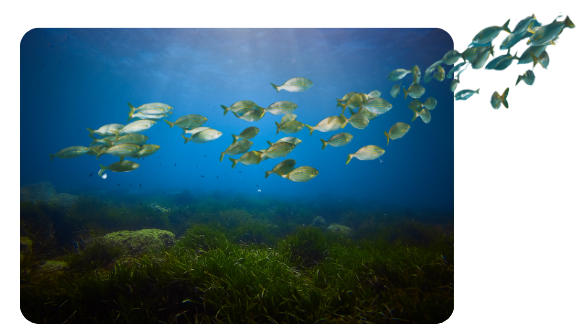
Professor Tom Bell
Head of Group - Marine Processes and Observations
tbe@pml.ac.uk | +44 (0)1752 633100 (switchboard)"My scientific interests surround the importance of the surface ocean and overlying atmosphere within the global climate system. I enjoy working on a variety of theoretical and experimental (lab and field) problems. More generally, I love knowing about how and why “things’ operate, including equipment, natural systems, and people! "
Prof. Bell’s research addresses a broad range of the chemical, physical and biological processes that influence climate-relevant gases and their exchange between air and sea. He has recently expanded his focus to address human activities in/on the ocean surface. Specifically, he is interested in the potential role the ocean could play in removing carbon dioxide from the atmosphere and the influence of ship emissions on the marine environment.
After a BSc in Environmental Science, Prof. Bell gained his PhD from the University of East Anglia (UEA) in 2006. He then undertook research at UEA, after which he spent some years in the USA at the University of California, Irvine. Throughout this period, he worked closely with Gill Malin, Peter Liss, Tim Jickells and Eric Saltzman. He came to work at PML in 2013, where he co-led the establishment of Penlee Point Atmospheric Observatory at the mouth of Plymouth Sound. He is the PML air-sea exchange (ASE) team lead and has played an instrumental role in a number of international initiatives linked to the Surface Ocean-Lower Atmosphere Study (SOLAS).
Prof. Bell has worked on projects funded by the Natural Environment Research Council (NERC), the European Union, Department for Business, Energy & Industrial Strategy (BEIS), the European Space Agency (ESA) and NASA. He has collaborated with scientists in multiple countries, and published >50 research papers focussed on:
- multidisciplinary measurements of the chemistry and biology of the open ocean and marine atmosphere;
- field studies addressing the factors affecting air/ sea gas exchange;
- the collation of large-scale datasets as tools for assessing global air/sea flux products; and
- empirical modelling approaches to predict seawater trace gas distributions.
Key Projects
- Sea Carbon Unlocking and Removal, SeaCURE
- Advances in Air-Sea Exchange using Autonomy, ASEauto
- Atlantic Meridional Transect Ocean CO2 Flux from Satellite, AMT4OceanSatFlux
- Atmospheric Composition and Radiative forcing changes due to UN International Ship Emissions regulations, ACRUISE
- Ozone loss to the sea surface microlayer, O3-SML
- Processes Influencing Carbon Cycling: Observations of the Lower limb of the Antarctic Overturning, PICCOLO
- Shipping Contributions to Inland Pollution Push for the Enforcement of Regulations, SCIPPER
- Southern oCean SeAsonaL Experiment, SCALE
- North Atlantic Aerosols and Marine Ecosystems Study, NAAMES
- Ocean Regulation of Climate through Heat and Carbon Sequestration and Transports, ORCHESTRA
- North Atlantic climate system integrated study, ACSIS
Selected Publications
- Yang, M; Smyth, TJ; Kitidis, V; Brown, IJ; Wohl, C; Yelland, MJ; Bell, TG; 2021. Natural variability in air–sea gas transfer efficiency of CO2. Scientific Reports.
- Sanchez, K.J., Chen, CL., Russell, L.M. et al. Substantial Seasonal Contribution of Observed Biogenic Sulfate Particles to Cloud Condensation Nuclei. Sci Rep 8, 3235 (2018).
- Bell, T. G., Landwehr, S., Miller, S. D., de Bruyn, W. J., Callaghan, A. H., Scanlon, B., Ward, B., Yang, M., and Saltzman, E. S.. Estimation of bubble-mediated air–sea gas exchange from concurrent DMS and CO2 transfer velocities at intermediate–high wind speeds. Atmos. Chem. Phys., 17, 9019–9033 (2017).
- Hopkins, F., Bell, T., Yang, M. et al. Air exposure of coral is a significant source of dimethylsulfide (DMS) to the atmosphere. Sci Rep 6, 36031 (2016).
- Paulot, F., Jacob, D. J., Johnson, M. T., Bell, T. G., Baker, A. R., Keene, W. C., Lima, I. D., Doney, S. C., and Stock, C. A.. Global oceanic emission of ammonia: Constraints from seawater and atmospheric observations. Global Biogeochem. Cycles, 29, 1165– 1178 (2015).
- Bell, T. G., De Bruyn, W., Miller, S. D., Ward, B., Christensen, K. H., and Saltzman, E. S.. Air–sea dimethylsulfide (DMS) gas transfer in the North Atlantic: evidence for limited interfacial gas exchange at high wind speed. Atmos. Chem. Phys., 13, 11073–11087 (2013).
